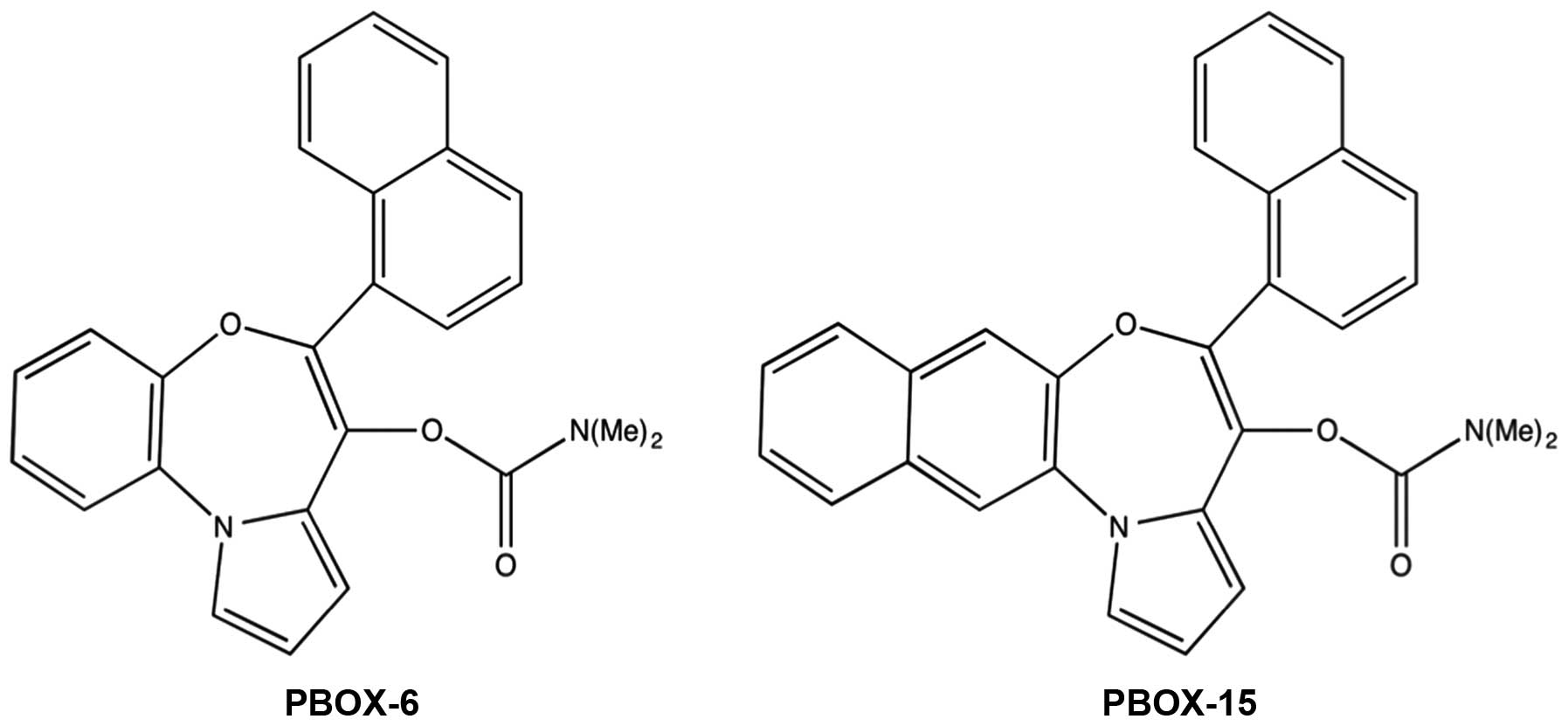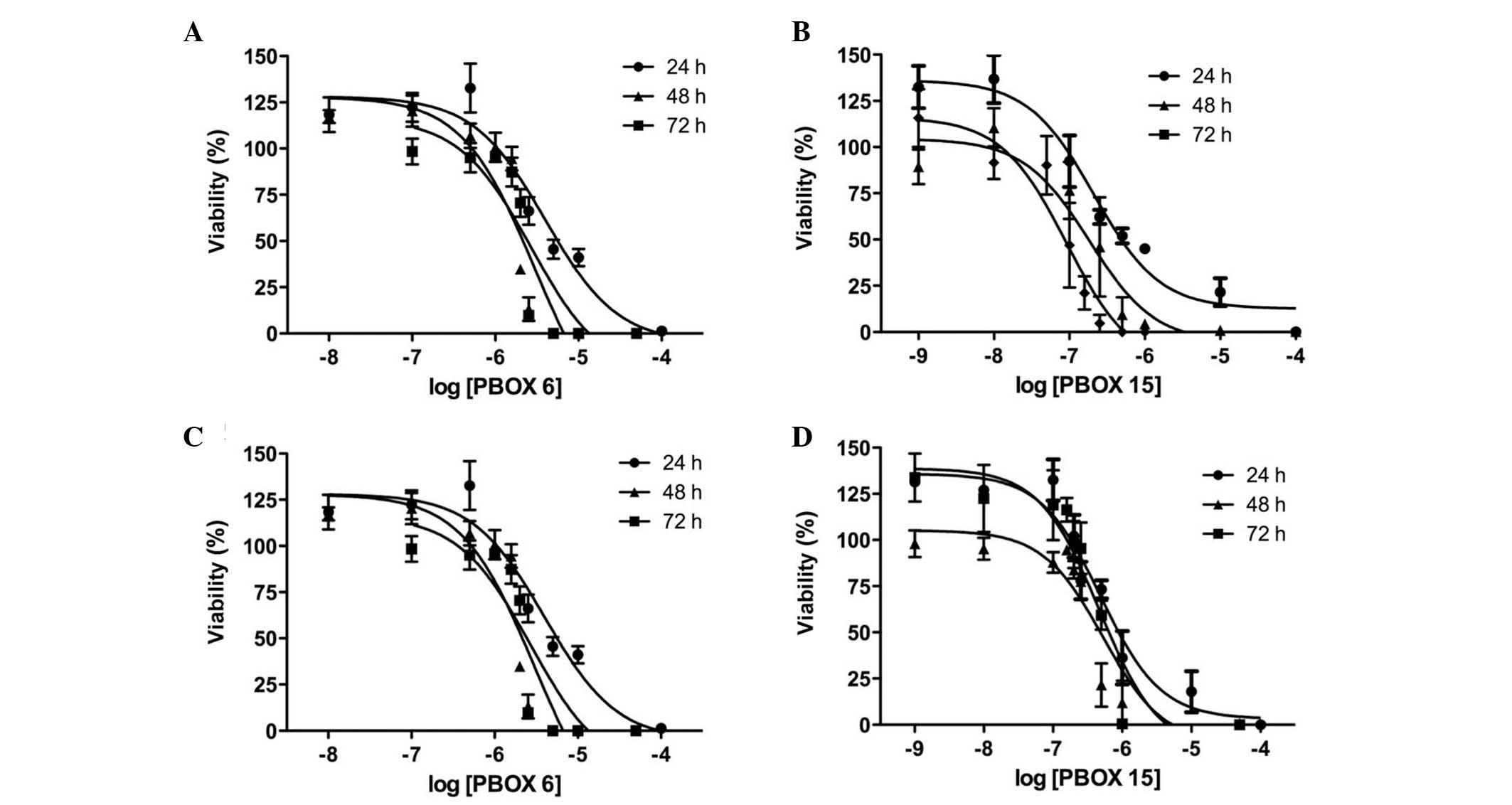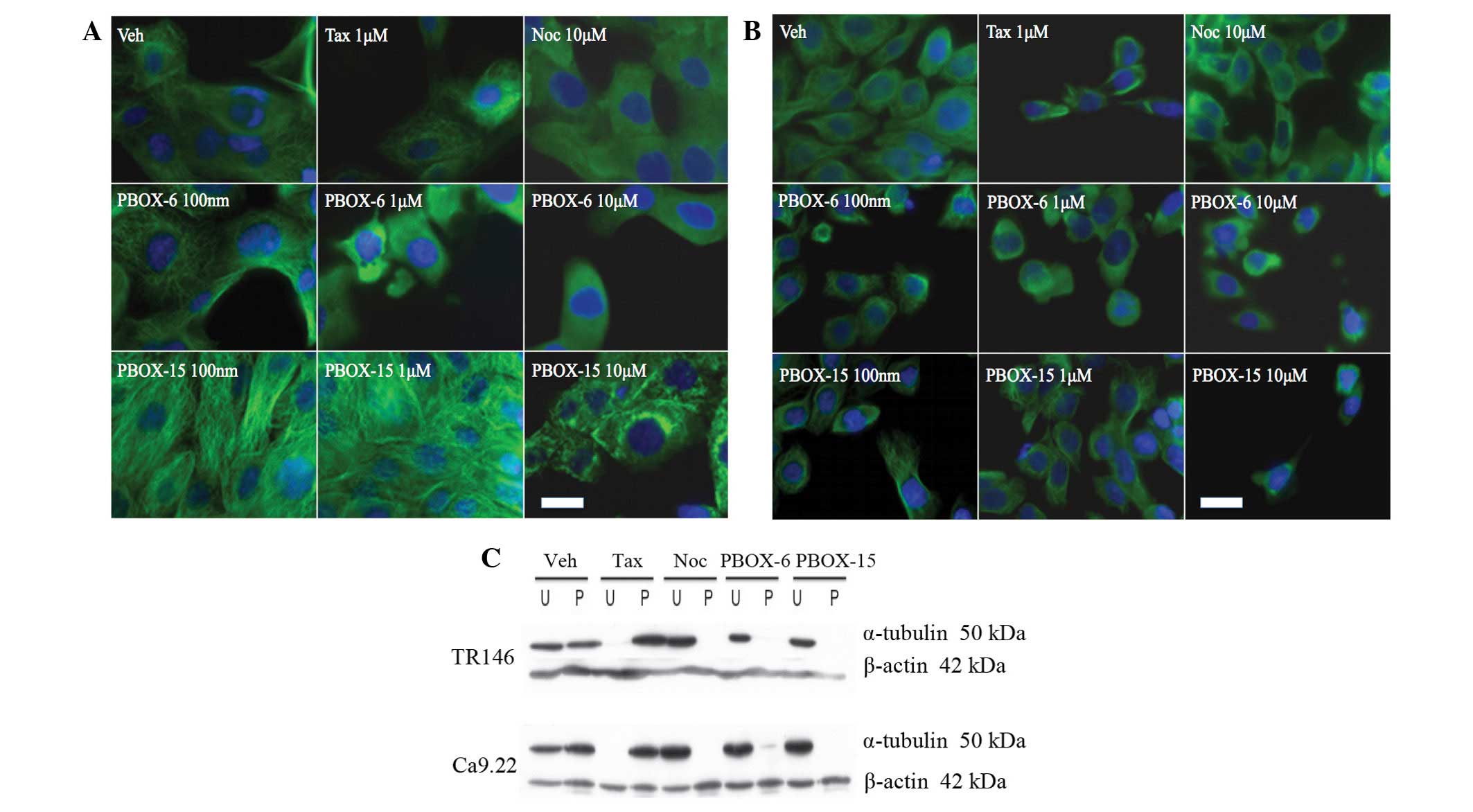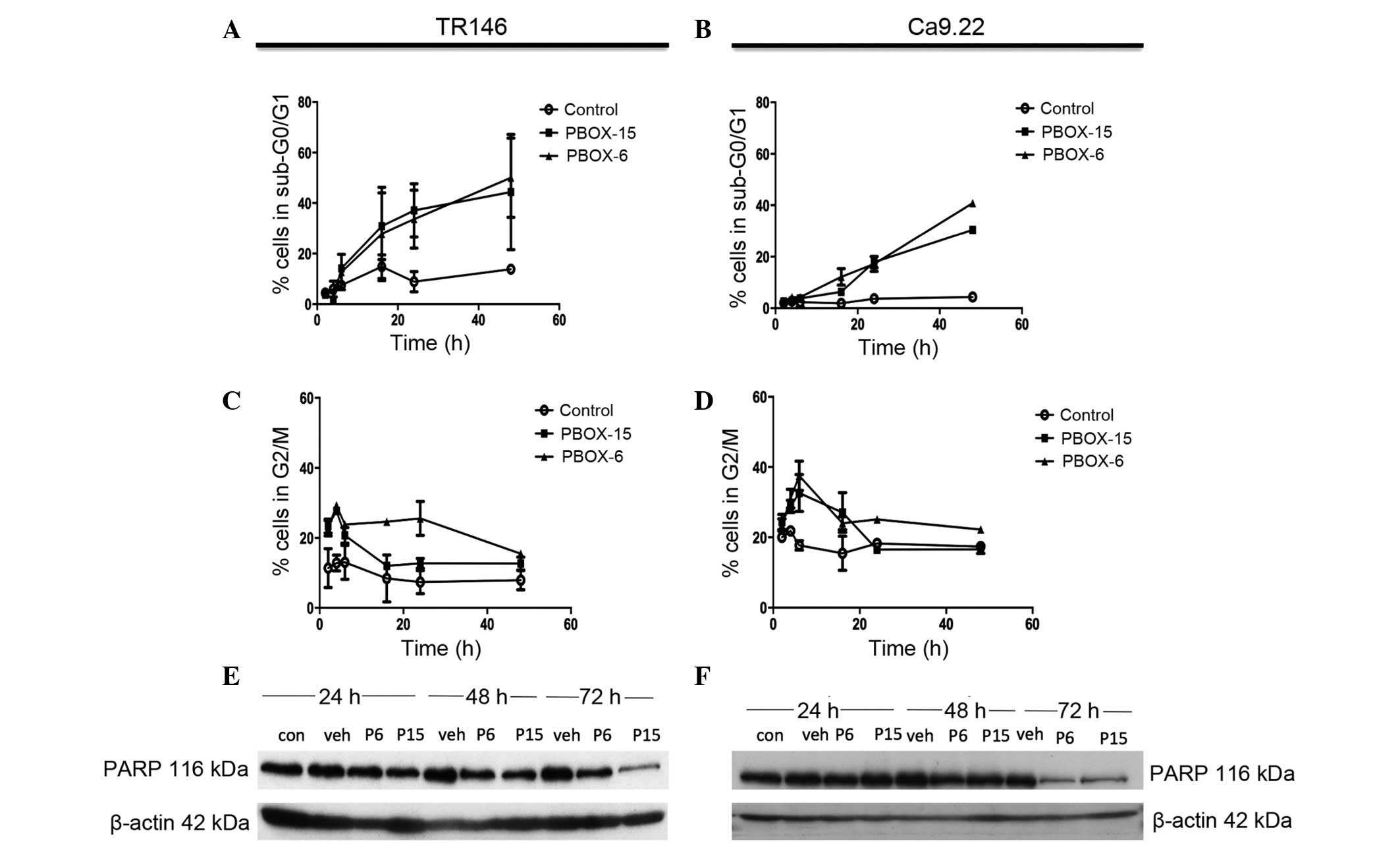Induction of apoptosis in oral squamous carcinoma cells by pyrrolo-1,5-benzoxazepines
- Authors:
- Published online on: May 25, 2015 https://doi.org/10.3892/mmr.2015.3832
- Pages: 3748-3754
Metrics: Total
Views: 0 (Spandidos Publications: | PMC Statistics: )
Total PDF Downloads: 0 (Spandidos Publications: | PMC Statistics: )
Abstract
Oral cancer (OC) is a largely asymptomatic disease, resulting in one of the highest mortality rates of any cancer. OC is currently ranked as the sixth most common cancer in the world, according to a recent World Health Organization analysis, and its prevalence is increasing, both in western and developing regions. Depending on the stage of OC, treatment strategies include surgery, radiation therapy and chemotherapy, or a combination thereof. As with numerous other types of cancer, resistance to conventional chemotherapeutic drugs is increasing in oral squamous cell carcinoma (OSCC). The present study aimed to investigate the use of a novel group of compounds, the pyrrolo‑1,5‑benzoxazepines (PBOXs), as a therapeutic alternative for the treatment of OC. PBOXs are microtubule‑targeting agents that are able to induce apoptosis in numerous cancer cell types, thereby preventing tumour cell proliferation. Ca9.22 gingival and TR146 buccal cell lines were used as models for OSSC. Cell viability and proliferation in the presence of two PBOXs: PBOX‑6 and PBOX‑15, was monitored using an AlamarBlueTM assay. Flow cytometric analysis of propidium iodide‑stained cells was used to determine the DNA content, and therefore the percentage of cells in each phase of the cell cycle. Microtubule disruption was determined by indirect immunofluorescence staining. Changes in protein expression and degradation were determined by western blotting. The results of the present study indicated that both PBOX‑6 and ‑15 were able to induce apoptotic cell death by disrupting the microtubule network in both cell lines. The EC50 values were subsequently calculated for both PBOX‑6 and ‑15, and PBOX‑15 was shown to possess a higher potency. Both compounds displayed anti‑proliferative effects mediated through sustained G2/M arrest accompanied by tubulin disruption, and a decrease in DNA repair protein poly (ADP ribose) polymerase expression. These findings suggest that PBOXs may prove useful, either alone or in combination with other agents, in the treatment of chemotherapeutic resistant OSCC.













